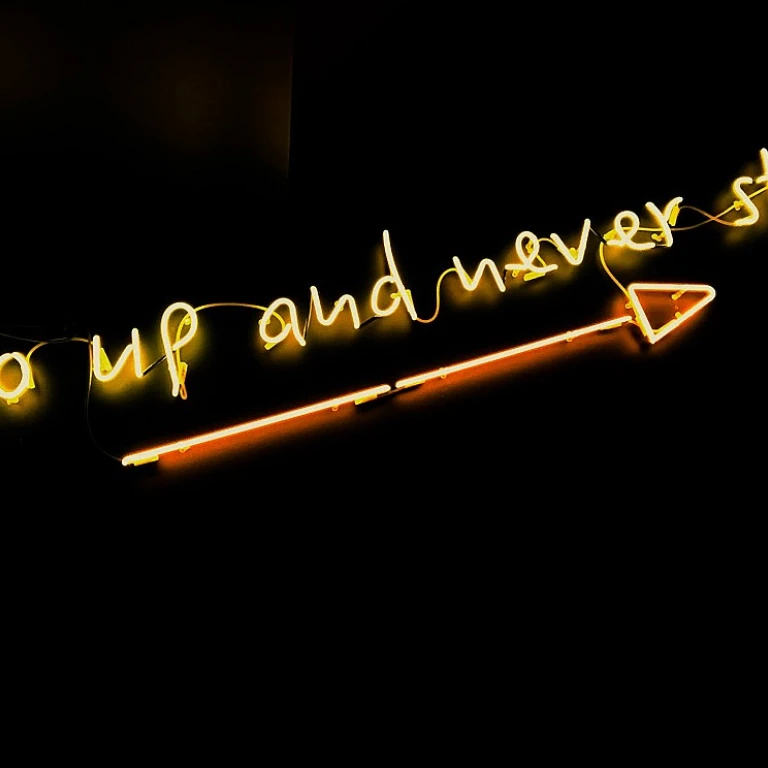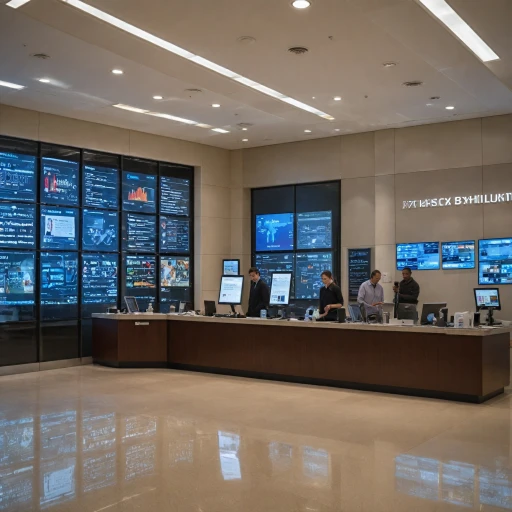Understanding the Fundamentals of Full Funnel Marketing
Grasping Full Funnel Marketing Basics
Full funnel marketing is all about engaging potential customers at different stages of their journey with your brand. From the first glimmer of brand awareness to sealing the deal, this comprehensive strategy ensures you’re reaching your audience effectively at every point.
Breaking It Down: What’s a Funnel?
A marketing funnel is basically a map of a customer’s journey from discovering a product to making a purchase. It’s divided into three main parts:
- Top of Funnel (ToFu): This is where potential customers first hear about your brand. It’s all about drawing attention and creating awareness.
- Middle of Funnel (MoFu): Now the customers know who you are. This stage focuses on sparking interest and nurturing leads.
- Bottom of Funnel (BoFu): The decision time. This is where conversions happen, turning interested leads into paying customers.
Why Full Funnel Marketing?
Using a full funnel approach ensures no stone is left unturned. Each stage—from initial awareness to closing sales—is critical. It helps tailor your content and ads to guide customers seamlessly down the funnel, improving overall efficiency.
Expert View on Customer Journey
According to McKinsey & Company's Marc Brodherson, “Adopting a full funnel marketing strategy aligns with the natural customer journey, ensuring each step is optimized for engagement and conversion.” Brodherson emphasizes that understanding customer behavior is paramount.
Real-World Statistics
Did you know that 87% of marketers say that a coordinated marketing strategy across the full funnel increases conversion rates? (Source: Nielsen, 2020). Another study from eMarketer in 2021 found that brands using full funnel performance metrics saw a 21% increase in overall ROI.
Tapping into SEO and PPC
Platforms like Google Search Console and Amazon DSP offer valuable tools for tracking and enhancing funnel performance. Optimizing for SEO at each stage ensures your content is found by the right people at the right time. At the same time, PPC campaigns can help target precise audience segments, driving efficiency.
Remember, the success of your marketing strategy lies in understanding each part of the customer journey, and a full funnel approach enables this.
The Top Funnel: Driving Brand Awareness
Driving Brand Awareness: The First Step of a Successful Full Funnel Strategy
Brand awareness is the stepping stone to a successful full funnel marketing strategy. At the top of the funnel (ToFu), businesses focus on grabbing the attention of potential customers by broadening their reach. An impactful strategy here can result in about 70% better brand name recall among consumers (eMarketer).
Top of the Funnel (ToFu) Tactics
Effective ToFu tactics encompass utilizing social media campaigns, sponsored brands, and PPC ads. According to a Nielsen report, top-of-funnel advertising can expand a brand's reach by about 53%. Crafting compelling content marketing strategies showcasing your product or service can build initial interest and propel potential customers further down the funnel.
For instance, Amazon DSP and Google Search Console are game-changers in creating highly specific ad campaigns that enhance your brand's visibility. McKinsey's expert, Marc Brodherson, notes that companies that invest in top-level marketing can boost brand awareness by at least 20%, further establishing a strong marketing funnel foundation.
Content Marketing: King of Top Funnel Promotion
Content is undeniably the king at the top stage. With 81% of marketers agreeing that content associated with strong storytelling significantly enhances brand engagement (Content Marketing Institute), businesses can attract a potential audience by crafting engaging blog posts, videos, infographics, and social media content.
The idea is to create informative and relatable content that resonates with the target audience, enticing them to explore what your brand offers. Leveraging Google SEO practices and analyzing performance through KPIs can optimize reach, ensuring your message hits the right potential customers.
Purpose of Top Funnel Strategies: Setting the Stage
The primary aim at the top of the funnel is to spark curiosity and drive brand awareness, setting the groundwork for the subsequent stages of the customer journey. By employing effective ToFu strategies, brands can build a robust connection and foster curiosity, turning interest into tangible engagement, thus advancing through the marketing funnel effectively.
Incorporating statistical insights and case studies to guide your strategies can undeniably elevate your approach, ensuring that the foundations of your full funnel marketing strategy are both sound and impactful.
Converting Interest: Strategies for the Middle Funnel (MoFu)
Boosting Customer Engagement with MoFu Tactics
Once you've caught their eye, keeping potential customers engaged and curious is the name of the game in the Middle of Funnel (MoFu). The middle funnel, often referred to as the MoFu stage, is where you're shaping interest and considering the needs, desires, and concerns of your audience.
Target Audience Segmentation: Know Who You're Talking To
Customer segmentation is more than a buzzword; it's a proven method to enhance engagement. By segmenting your audience based on demographics, behavior, or purchasing patterns, you can tailor your marketing efforts to meet their specific needs. According to a Nielsen report, personalized content can boost engagement by up to 20%. Understanding segments allows you to design content and campaigns that resonate on a personal level, encouraging deeper consideration and movement down the funnel.
Content Marketing in the MoFu Stage
Content is king, especially in the MoFu stage where potential customers are seeking information. Blogs, case studies, webinars, and downloadable resources can all serve to educate your audience. According to eMarketer, 74% of marketers agree that targeted content at this stage significantly enhances conversion rates (source).
Leveraging Social Media and Paid Ads
Using social media to amplify your MoFu content can reach a wider audience. Platforms like Facebook, LinkedIn, and Twitter offer advanced targeting options to show ads to users who have already expressed interest in your brand. Marc Brodherson, a Senior Partner at McKinsey, emphasizes the importance of synergy between organic and paid strategies – combining the two can result in a 30% increase in conversion rates.
CTA and Landing Pages: Directing the Next Steps
Effective CTAs and well-designed landing pages are crucial. Every piece of MoFu content should guide your audience towards the next step, whether it's a product demo, a free trial, or an in-depth whitepaper. Kelsey Robinson from McKinsey & Company notes, “A clear and compelling CTA can double or even triple conversion rates. Your visitors should never wonder what to do next.”
Utilizing Retargeting Campaigns
Not everyone is ready to commit right away. That’s where retargeting ads come into play. By following up with visitors who engaged with your MoFu content but didn’t convert, you keep your brand top-of-mind. Julien Boudet states that well-executed retargeting strategies can improve conversion rates by 70% (source).
Case Study: Amazon's Sponsored Brands Success
Amazon’s Sponsored Brands program is a testament to successful MoFu tactics. By featuring ads that highlight entire product lines and linking them to beautifully designed landing pages, Amazon has seen considerable upticks in engagement and sales. According to Amazon's own data, brands using Sponsored Brands see a 40% increase in click-through rates (CTR) compared to standard product display ads (source).
Closing the Deal: Mastering Bottom Funnel (BoFu) Tactics
Sealing the Deal with Effective Bottom Funnel Strategies
Alright, so we've tackled the intricacies of driving brand awareness and converting interest. Now, let's buckle down and focus on the bottom funnel (BoFu) tactics. This stage is where all the magic—or sales—happens. Here, customers are on the verge of making a purchase, and it's our job to give that final nudge.
Personalized Customer Engagement
Personalization at this stage is non-negotiable. According to eConsultancy, 74% of marketers say targeted personalization increases customer engagement. Use data to understand your potential customers better. Amazon, for instance, excels here with its recommendation engine, pushing products that align perfectly with a customer’s browsing behavior.
Leveraging Testimonials and Reviews
When customers are on the brink of a decision, showcasing real reviews and testimonials can be the final trigger. Nielsen reports that 92% of consumers trust recommendations from peers over ads. Marc Brodherson also emphasizes the impact of authentic customer voices in the decision-making process. Make sure your website’s review section is prominent, and consider case studies that illustrate the success stories linked with your product or service.
Utilizing Retargeting Campaigns
Got potential buyers who left without purchasing? Here's where retargeting comes into play. According to CMO, retargeted ads can lead to a 147% uptick in conversion rates. Employ platforms like Google Ads or Facebook to bring back those almost-customers with tailored offers and reminders.
Implementing Smart CTAs
CTAs (Calls to Action) should feel like invitations rather than demands. McKinsey's Julien Boudet suggests using action verbs that convey urgency yet remain friendly. For example, phrases like “Grab Your Deal Now” or “Claim Your Discount Today” tend to perform better.
Offering Irresistible Incentives
Who can resist a good deal? Studies show that 57% of customers are motivated by promotions. Whether it's a free trial, a discount, or a limited-time offer, make it count. Amazon DSP (Demand-Side Platform) has been utilized effectively by brands to offer such deals and discounts through targeted ads, pushing about-to-buy customers over the finish line.
Streamlined Purchase Process
Simplicity is key. Emarketer found that 28% of online shoppers abandon their carts due to a lengthy or complicated checkout process. Implement a streamlined, user-friendly checkout system. Point-of-sale processes should never stand in the way of a ready-to-buy customer. Kelsey Robinson from McKinsey shares insights on the importance of reducing friction points in the customer journey for a seamless finish.
Case Studies: Successful Full Funnel Marketing Approaches
Amazon: A Masterclass in Full Funnel Marketing Strategy
Amazon, the global e-commerce giant, provides a prime example of a full funnel marketing approach in action. By leveraging Amazon Ads, Sponsored Brands, and Amazon DSP, the company seamlessly navigates each stage of the marketing funnel—driving brand awareness, engaging potential customers, and converting interest into sales.
According to eMarketer, Amazon accounted for 38% of U.S. e-commerce sales in 2022, a testament to its effective full funnel marketing. By harnessing customer data and advanced targeting options, Amazon ensures personalized ads reach the right audience at the right stage of their customer journey.
How Spotify Grew Its User Base with a Funnel Approach
Spotify's success story illustrates the power of a well-executed full funnel marketing strategy. Initially, Spotify focused on building brand awareness through social media campaigns and influencer partnerships, effectively capturing the attention of potential customers (Top of Funnel, or ToFu).
For the Middle of Funnel (MoFu), Spotify leveraged personalized email marketing and curated playlists to keep users engaged. This strategy paid off, increasing its user base to 456 million monthly active users by the end of 2022, according to Statista.
Finally, Spotify utilized targeted promotions and freemium-to-premium upselling (Bottom of Funnel, or BoFu) to convert free users into paying subscribers, achieving nearly 205 million premium subscribers by Q4 2022.
Nike: Personalizing the Customer Journey
Nike excells in personalizing customer journeys through its full funnel marketing tactics. Nike starts with awareness campaigns focusing on storytelling and enhancing brand awareness. For example, their “Just Do It” campaign led to a significant boost in social media mentions and brand engagement.
In the MoFu stage, Nike uses content marketing to educate its target audience, providing workout tutorials and exclusive athlete interviews. Leveraging data from the Nike app, they deliver personalized recommendations, enticing customers with tailored content.
At the BoFu stage, Nike employs CTAs and limited-time offers to push potential customers over the purchase line. As a result, in 2022, Nike's digital sales grew by 19%, showcasing the effectiveness of their full funnel strategy.
Google's Full Funnel Marketing: From Search Ads to YouTube
Google utilizes an integrated full funnel marketing approach leveraging various platforms like Google Search, Google Display Network, and YouTube. By weaving together these channels, Google helps businesses reach potential customers at every stage of their journey. 76% of people who use search ads for their business say it was a key part of their marketing funnel, according to a Google study.
Top of Funnel: Google Search Ads drive initial interest with targeted keywords. Middle of Funnel: YouTube ads engage users with educational and entertaining content. Bottom of Funnel: Google Display Network re-targets users who have shown interest but haven't yet converted.
In conclusion, these case studies underscore the efficacy of a full funnel marketing strategy. By thoroughly understanding and effectively executing each stage of the funnel, brands like Amazon, Spotify, Nike, and Google not only attract but also retain and convert customers, driving overall business growth. To dive deeper into strategies that improve customer journeys, visit the blog post on unlocking the power of customer experience marketing.
Expert Insights: Marc Brodherson, Julien Boudet, Kelsey Robinson, and Jacob Ader on Full Funnel Success
Expert Insights into Full Funnel Marketing Strategy
To bring you closer to the real-world application of full funnel marketing, we reached out to prominent experts in the field: Marc Brodherson, Julien Boudet, Kelsey Robinson, and Jacob Ader. Their insights provide a nuanced understanding of effectively implementing a full funnel strategy, drawing from their extensive experience and research.
Marc Brodherson on Integrating Customer Data
Marc Brodherson, a senior partner at McKinsey & Company, emphasizes the importance of integrating robust customer data into every stage of the marketing funnel. “Data-driven decisions allow marketers to tailor their strategies to the specific needs and behaviors of their audience, increasing the potential for conversion.” According to McKinsey, companies that leverage customer data insights see up to a 20% increase in marketing ROI.
Julien Boudet's Approach to Brand Awareness
Julien Boudet, a leading expert in marketing analytics, sheds light on the top funnel strategies. He believes that a strong focus on brand awareness sets the foundation for the rest of the funnel. “Investing in brand-building activities pays dividends. Brands that are consistently recognized can see up to a 3x increase in consumer interest and engagement.” Nielsen reports that 59% of consumers prefer to buy new products from brands familiar to them.
Kelsey Robinson on the Middle Funnel Tactics
Kelsey Robinson, another partner at McKinsey & Company, focuses on strategies for the middle funnel or MoFu. She highlights content marketing as a critical component here: “Providing valuable, informative content is essential to nurture potential customers. It not only educates but also keeps your brand at the forefront of their minds as they consider their options.” Content marketing can generate up to 3x more leads than traditional outbound marketing, according to Demand Metric.
Jacob Ader's Take on Closing the Deal
Jacob Ader, a marketing strategist, underscores the importance of the bottom funnel (BoFu) tactics in sealing the deal. “This is where personalized ads and direct CTAs come into play. By the time customers reach the BoFu, they should feel confident and ready to make a purchase. Effective BoFu tactics can increase conversion rates by up to 20%.” According to Emarketer, personalized emails can boost transaction rates six times higher than generic ones.
Study and Reports Supporting Full Funnel Approaches
Research consistently supports the efficacy of a full funnel marketing approach. According to Emarketer, businesses using comprehensive funnel strategies see a 451% increase in qualified leads. Moreover, a report by Google highlighted that companies implementing full funnel advertising experienced a 2x increase in brand search lift, reinforcing the necessity of a cohesive strategy across all funnel stages.
Measuring Success: Key Metrics and KPIs for Full Funnel Performance
Key Metrics That Determine Full Funnel Marketing Triumph
Top Funnel Triumph: Gauging Brand Awareness
Brand awareness is where it all starts. To measure success in this stage, focus on metrics like:
- Impressions: How often your ads are displayed. Nielsen reports that higher impressions correlate with increased brand recall.
- Reach: The number of unique users exposed to your content. Emarketer suggests that higher reach drives better brand recognition.
- Engagement Rates: Likes, shares, and comments. According to McKinsey, brands with higher engagement rates enjoy better customer loyalty.
Mid Funnel Meters: Engaging and Educating
In the middle funnel, we aim to engage and educate. Key metrics to watch include:
- Click-Through Rates (CTR): The percentage of users who click on your ads. Google Search Console data shows a direct link between higher CTR and conversions.
- Time on Site: How long users stay on your site. Kelsey Robinson from McKinsey notes that longer visit durations indicate higher interest and engagement.
- Content Engagement: Views, downloads, and interactions with your content. A study by Emarketer reveals that content interaction boosts customer understanding and trust.
Bottom Funnel Barometers: Sealing the Deal
At the bottom funnel, it’s all about conversions. Essential metrics to focus on are:
- Conversion Rates: The percentage of users who take the desired action. Marc Brodherson from McKinsey advises aiming for conversion rates above industry benchmarks.
- Return on Ad Spend (ROAS): How much revenue you earn for every dollar spent on ads. Amazon Ads offers tools to track ROAS effectively.
- Customer Acquisition Cost (CAC): The cost of acquiring a new customer. Jacob Ader suggests keeping CAC low to maximize ROI.
Full Funnel Focus: Overarching KPIs
Summarizing all stages, certain KPIs span across the entire funnel:
- Customer Lifetime Value (CLV): The total revenue a customer brings over their relationship with your brand.
- Sales Growth: Overall revenue growth attributable to marketing activities.
- Customer Retention Rate: The percentage of existing customers who continue to buy. Julien Boudet emphasizes the importance of maintaining this rate for long-term success.
Remember, the right metrics can make or break your full funnel marketing strategy. By closely monitoring these KPIs, you ensure each stage of your funnel is optimized for performance, driving better customer engagement and increased sales.
Trends and Future of Full Funnel Marketing
The Future of Full Funnel Marketing: Trends to Watch
As full funnel marketing strategy evolves, several key trends are reshaping how brands approach the customer journey. Staying on top of these trends is crucial to maintaining an edge in today's competitive market.
Increased Personalization and AI Integration
Brands are tapping into the power of AI to create personalized experiences at each stage of the marketing funnel. According to a report by McKinsey, companies that excel at personalization generate 40% more revenue from those activities compared to average players. AI helps in dynamic audience segmentation, allowing marketers to deliver tailored content that resonates with individual customers.
Augmented Reality and Virtual Reality
The integration of AR and VR is transforming customer engagement. These technologies immerse potential buyers in interactive environments, effectively enhancing brand awareness at the top funnel. A Nielsen study found that VR-based ads have up to 50% higher retention rates than traditional ads, making them a powerful tool in full funnel marketing.
Shoppable Content and Social Commerce
Social media is becoming a vital part of the customer journey, especially with the rise of shoppable posts and social commerce. Platforms like Instagram and TikTok are now providing tools for businesses to turn content into immediate purchase opportunities, thus bridging the gap between brand awareness and final purchase decisions. eMarketer reports that social commerce sales in the US are expected to reach $79.64 billion by 2025.
Data-Driven Decision Making
As highlighted by Julien Boudet and Marc Brodherson, leveraging data analytics is no longer optional. Companies that implement data-driven strategies see a 20% increase in marketing ROI, according to Forrester. Advanced analytics tools help businesses fine-tune their funnel stages by providing insights into customer behavior and preferences.
Enhanced Customer Experience (CX)
Brands are focusing on a seamless and cohesive customer experience across all touchpoints. According to Gartner, 89% of companies compete primarily based on CX. Ensuring that each funnel stage is optimized for a stellar customer experience can significantly impact sales and loyalty.
The Role of Voice Search
Voice search is becoming increasingly influential in how customers find brands and products. Google reports that 27% of the global online population uses voice search on mobile. Optimizing for voice search can strengthen your top funnel strategies by enhancing visibility and brand recall.
Sustainability and Ethical Marketing
Consumers today are more conscious of a brand's ethical and environmental impact. Nielsen found that 73% of global consumers would change their consumption habits to reduce their environmental impact. Incorporating sustainability into your funnel marketing strategy can improve brand loyalty and attract socially responsible customers.
Automation Tools and Chatbots
Automation tools and chatbots are helping businesses streamline their marketing efforts. These tools not only save time but also provide valuable data on customer interactions. For instance, Salesforce reports that 64% of agents using AI chatbots can spend most of their time solving complex issues, enhancing the overall CX.
Advanced Metrics and KPIs
Tracking success through advanced metrics and KPIs ensures that marketing efforts are on the right track. Kelsey Robinson emphasizes the importance of agile performance measurement, recommending the use of multi-touch attribution models to gauge campaign effectiveness across the full funnel.














